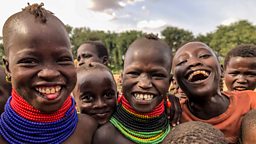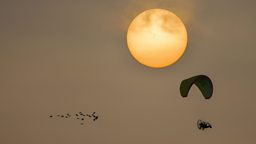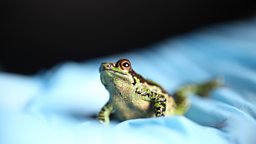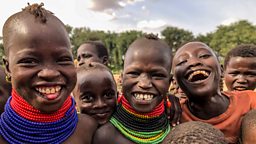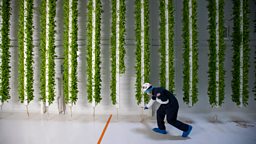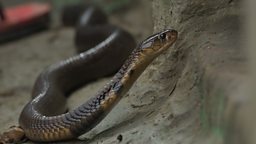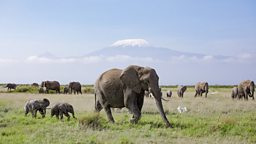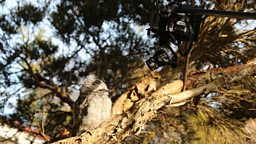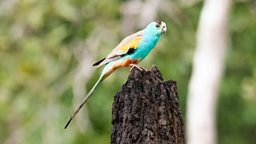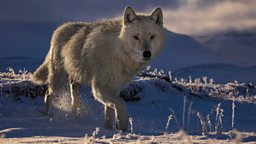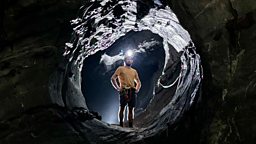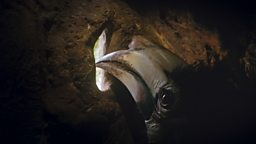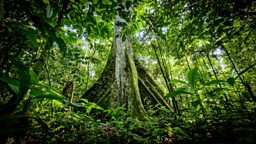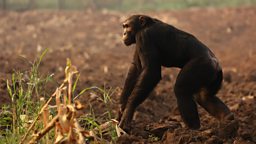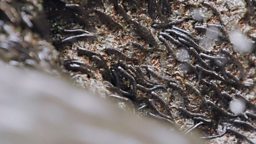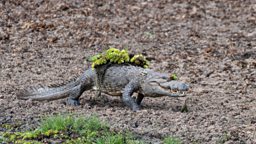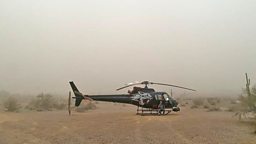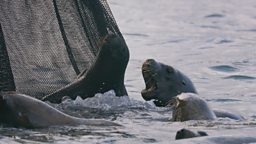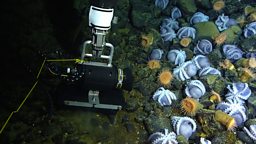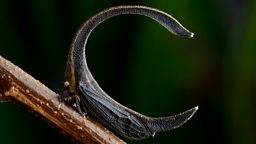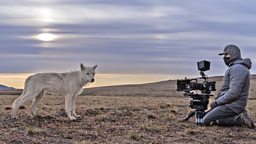Filming desert locusts in Turkana
By John Haskew, cameraman for Human
As we followed the locust life-cycle, our logistics became more and more challenging.
In the summer of 2020, at the height of the pandemic, I received a call from the Planet Earth team in Bristol. They had been researching and tracking vast numbers of desert locusts swarming across northern Kenya and a new generation was now hatching in Turkana, Kenya's poorest region.
We had to mobilise quickly. The team was in regular contact with local communities and we would receive alerts to the hatching of locusts. When they first emerge, locusts cannot fly and instead move as hoppers, voraciously eating everything in their path.
The marching hopper army was an extraordinary wildlife spectacle to witness, as they gathered in numbers and strength, their bright yellow forms contrasting starkly against the dark, baked earth. But we were also conflicted. These hatchings were occurring at a time when crops had just been planted, and in a region where millions of people already struggled, on a daily basis, with food insecurity. It was clear that local communities were being severely impacted.
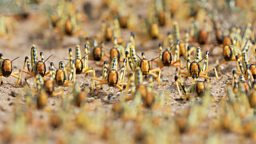
The hoppers were only the beginning. Once they had gained enough strength, these nymphs moulted and emerged as mature flying locusts.
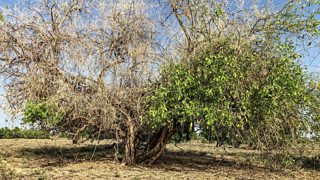
Swarms can travel up to 60 miles a day, and I can remember them looking like clouds of smoke, swirling and pluming upwards on a vast scale.
The impact of these swarms was immediately apparent; vast areas of forest and bushland were stripped bare as they moved and fed.
We could also see the devastation left behind when we met with local communities. Grazing land for sheep and goats, as well as crops of maize and sorghum, were destroyed by the locusts’ relentless journey.
The Planet Earth team in Bristol were in regular contact with the Food and Agriculture agency (FAO) of the United Nations who, together with the Government of Kenya, were initiating efforts to control the swarms to minimise their impact on local communities and agriculture.
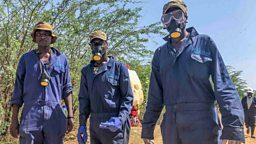
Each morning we would liaise with FAO spotter planes, who were helping to track the movement of the locusts and spray them from the air with pesticide to try to reduce their numbers.
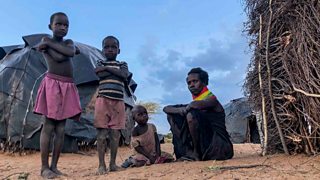
I had a real mix of emotions on this trip. As a wildlife cameraman it was a privilege to document this wildlife spectacle, but the scale of it was a sign that nature was out of balance. Prolonged rains in arid regions had led to an emergence of locusts that quickly became a plague, with an estimated 200 billion individuals. This was caused by our changing climate and the consequences were devastating.
Vulnerable communities were being impacted and this was occurring in a region where locusts were being killed in large numbers. This was occurring in a region that was not responsible for the larger problem. Indeed, in that year the whole continent of Africa created less than 4% of the world's emissions of carbon dioxide from fossil fuels and industry.
The local communities needed immediate assistance to control these locust invasions and ensure local food chains did not collapse completely. What was becoming apparent to me is that the climate emergency will often impact vulnerable people first… and that the world needs to act as a global community to tackle it.
